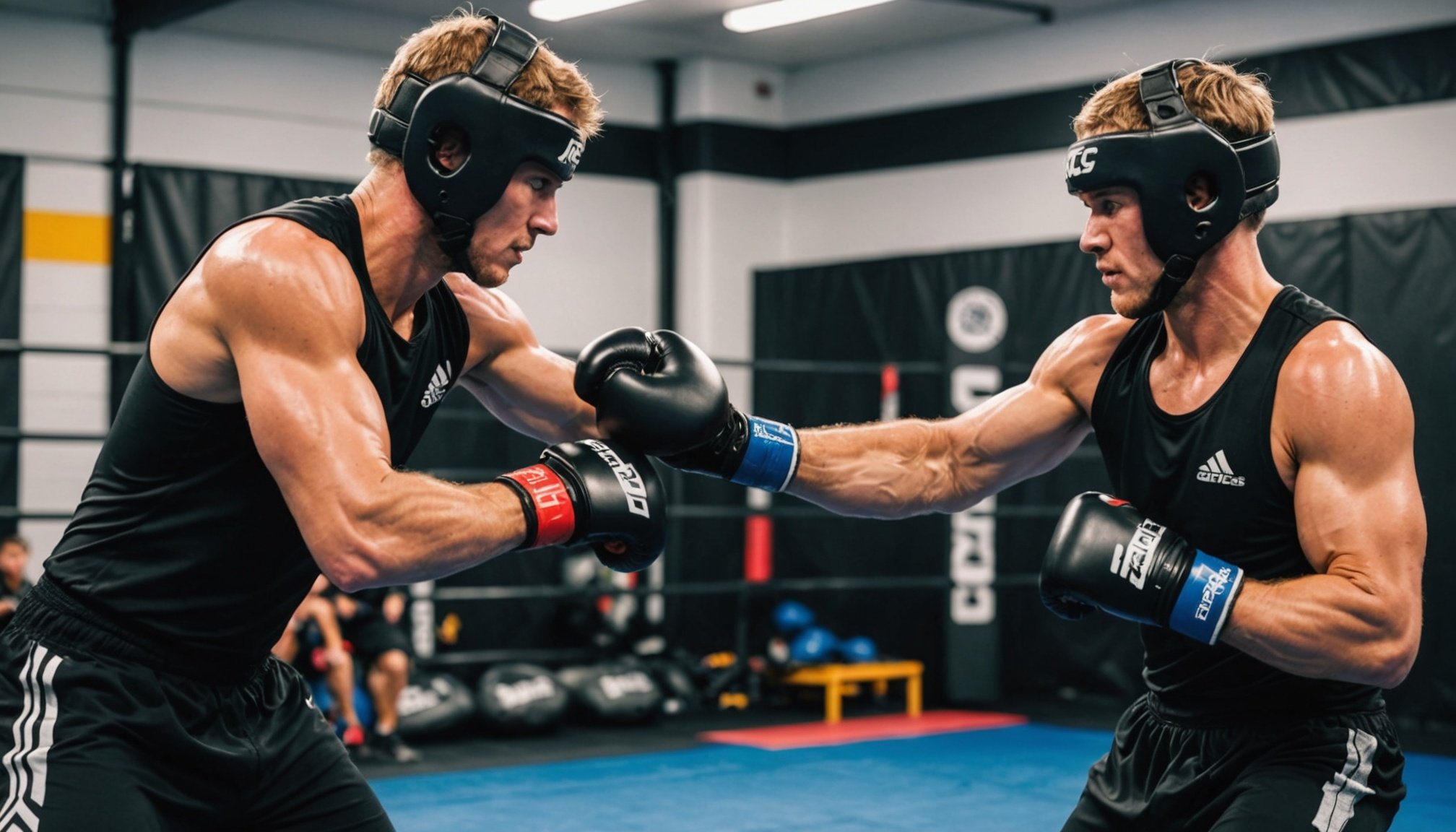Understanding Neurocognitive Training
Neurocognitive training blends cognitive exercises with physical activities, aiming to boost brain function and coordination, particularly crucial in combat sports. This training method focuses on enhancing mental processes like attention, memory, and problem-solving, which are integral to athletic performance. It operates on the principle that by challenging the brain, athletes can achieve better focus and quicker decision-making.
In combat sports, the importance of cognitive function cannot be overstated. It influences an athlete’s ability to process information rapidly, assess evolving situations, and execute split-second decisions. Enhancing these cognitive abilities can lead to improved reflexes and strategic thinking, offering a distinct advantage in the ring or on the mat.
Topic to read : A guide to enjoying kendal soccer park: play, explore, connect
The brain plays a pivotal role in both reflexes and decision-making. It acts as the control center for interpreting sensory inputs and triggering motor responses. In high-pressure sports scenarios, the ability to combine cognitive assessments with immediate physical reactions is critical. Training the neurocognitive aspects can refine an athlete’s reflexive actions and enhance their strategic planning, making it an invaluable tool for those aiming to elevate their combat sports performance. Thus, focusing on bolstering these mental skills can significantly impact athletic outcomes.
Methods of Neurocognitive Training in Combat Sports
In the realm of combat sports, honing cognitive abilities can offer a crucial edge. Neurocognitive training focuses on enhancing reaction times, decision-making, and situational awareness, using varied training techniques.
This might interest you : Mastering Post-Competition Recovery: Essential Protocols for Ultra-Endurance Athletes
Visual Training Techniques
Visual training aims to sharpen an athlete’s ability to swiftly process and react to visual cues. Eye-tracking exercises are pivotal—they train the fighter to maintain focus on opponents while distinguishing between threatening and non-threatening movements. This enhances reaction times, allowing fighters to counter effectively during matches.
Reaction Time Drills
Rapid response drills are indispensable in combat sports. These drills condition athletes to react instantaneously to opponents’ actions. Effective examples include the lightspeed drill, where fighters respond to sudden visual stimuli, improving neural pathways for quicker reflexes without conscious thought.
Decision-Making Simulations
Decision-making simulations immerse fighters in real-world scenarios. Virtual reality (VR) technologies enable them to face complex situations that enhance situational awareness without physical risks. These simulations are met with role-playing exercises, where athletes navigate various combat scenarios. They are trained to make strategic decisions swiftly, embedding adaptability and tactical thinking.
Training techniques in combat sports that target both mind and body form complete fighters. By incorporating neurocognitive exercises, athletes can significantly boost performance, offering a competitive advantage in the ring.
Practical Exercises for Athletes
When it comes to practical applications, understanding how to incorporate cognitive elements into training regimes can be transformative. Integrating cognitive drills alongside physical training is crucial for comprehensive athletic development.
Incorporating Cognitive Drills into Training Regimens
Scheduling cognitive drills effectively with physical workout sessions can enhance an athlete’s response time and decision-making skills. Begin with identifying periods within your weekly schedule, post-warm-up or cooldown, to introduce cognitive exercises. It’s essential to construct a balanced training plan that doesn’t fatigue athletes but rather complements their physical workouts. Design drills that mimic match situations for immersive learning.
Monitoring Progress and Adjustments
Regular evaluation ensures that the neurocognitive training is delivering the desired results. Implement a system where you assess the effectiveness of chosen exercises and allow feedback to guide ongoing modifications. This responsive approach ensures that athletes continue to benefit from the drills.
Integrating Team Dynamics
The strength of integrating team dynamics lies in its ability to enhance collective performance. Cognitive training often focuses on individual skills; however, team-based cognitive drills present opportunities for developing communication and strategic thinking, essential for team sports. Create scenarios where players must solve problems collectively, thus fostering trust and unity.
Scientific Backing and Case Studies
The enhancement of neurocognitive abilities in athletes is not solely anecdotal but backed by several comprehensive research studies. These studies rigorously evaluate the performance metrics associated with reflexes and decision-making, particularly in combat sports.
Among these studies, one noteworthy example is research conducted by the University of Montreal, which investigated the neurocognitive benefits of targeted training programs in martial artists. It was found that consistent training significantly improved athletes’ reaction times and decision-making speed. These metrics were meticulously measured using brain imaging and reflex tests, providing a robust framework to assess neurocognitive benefits.
Further supporting these findings, a study published in the Journal of Sports Sciences explored how tailored cognitive exercises could enhance fighters’ strategic thinking during matches. The study documented that athletes participating in these programs had quicker responses and better reflexive actions in high-pressure scenarios.
In various case studies involving athletes from diverse combat sports such as boxing and judo, substantial improvements in performance metrics were reported, highlighting enhanced cognitive processing and motor skills. Through such research, we can appreciate how psychological training complements physical training, ultimately shaping well-rounded combatants.











